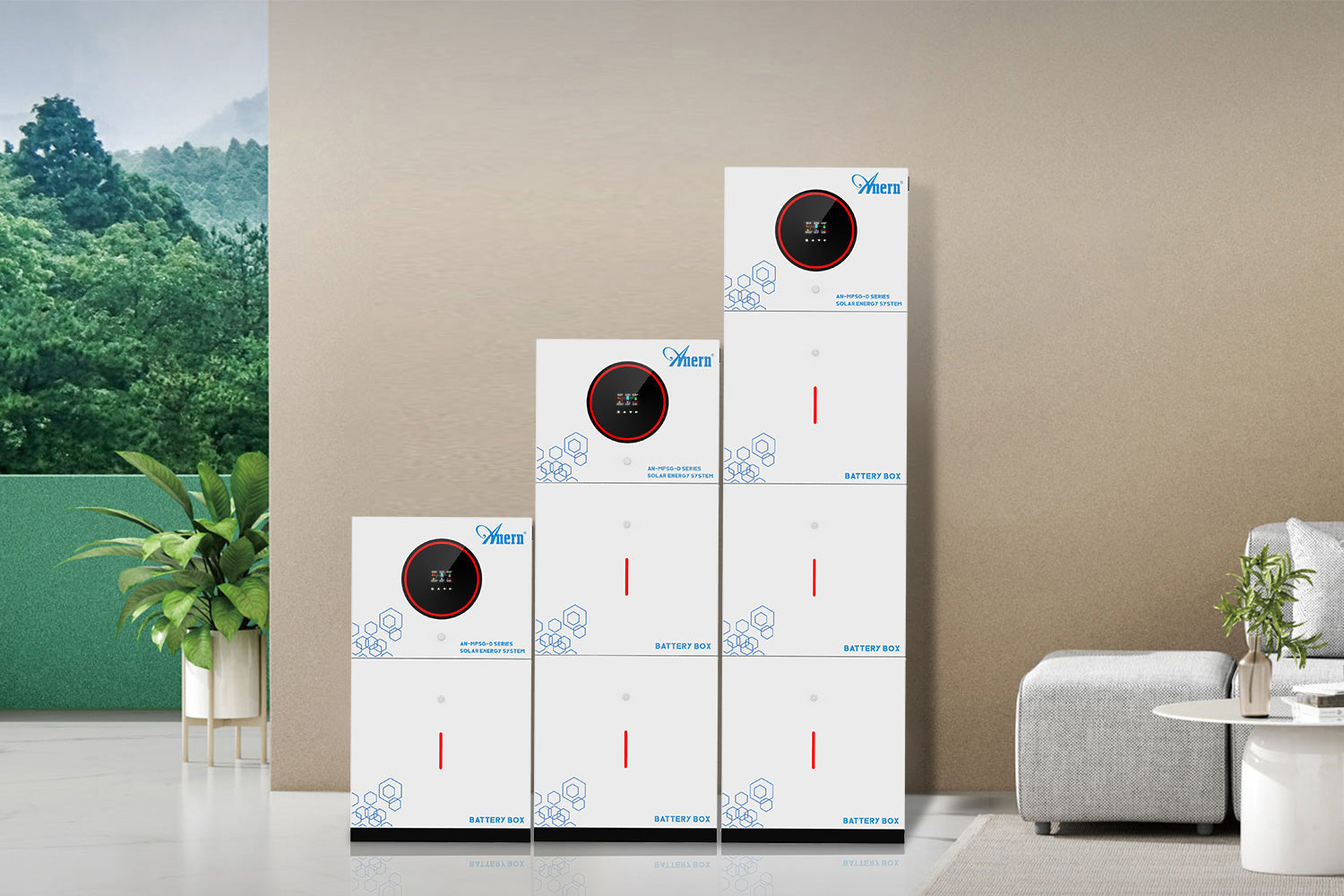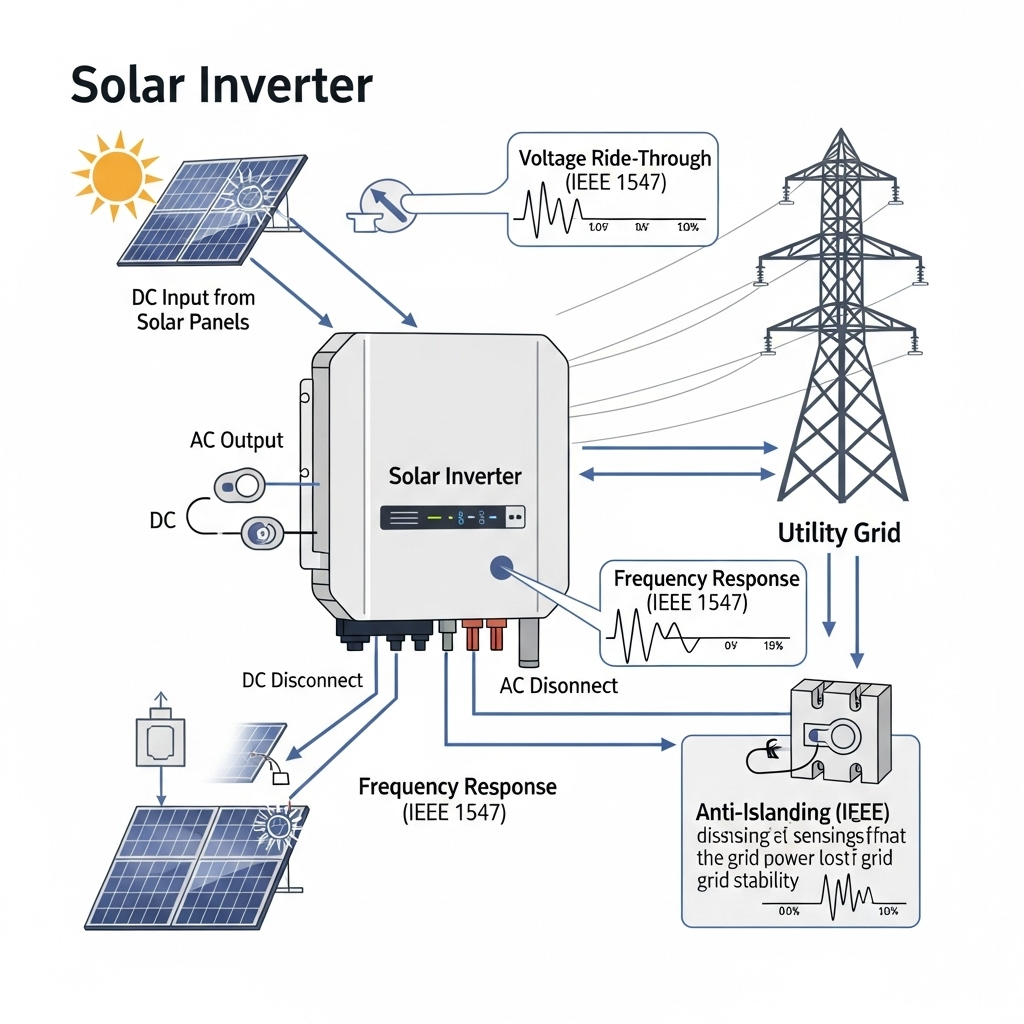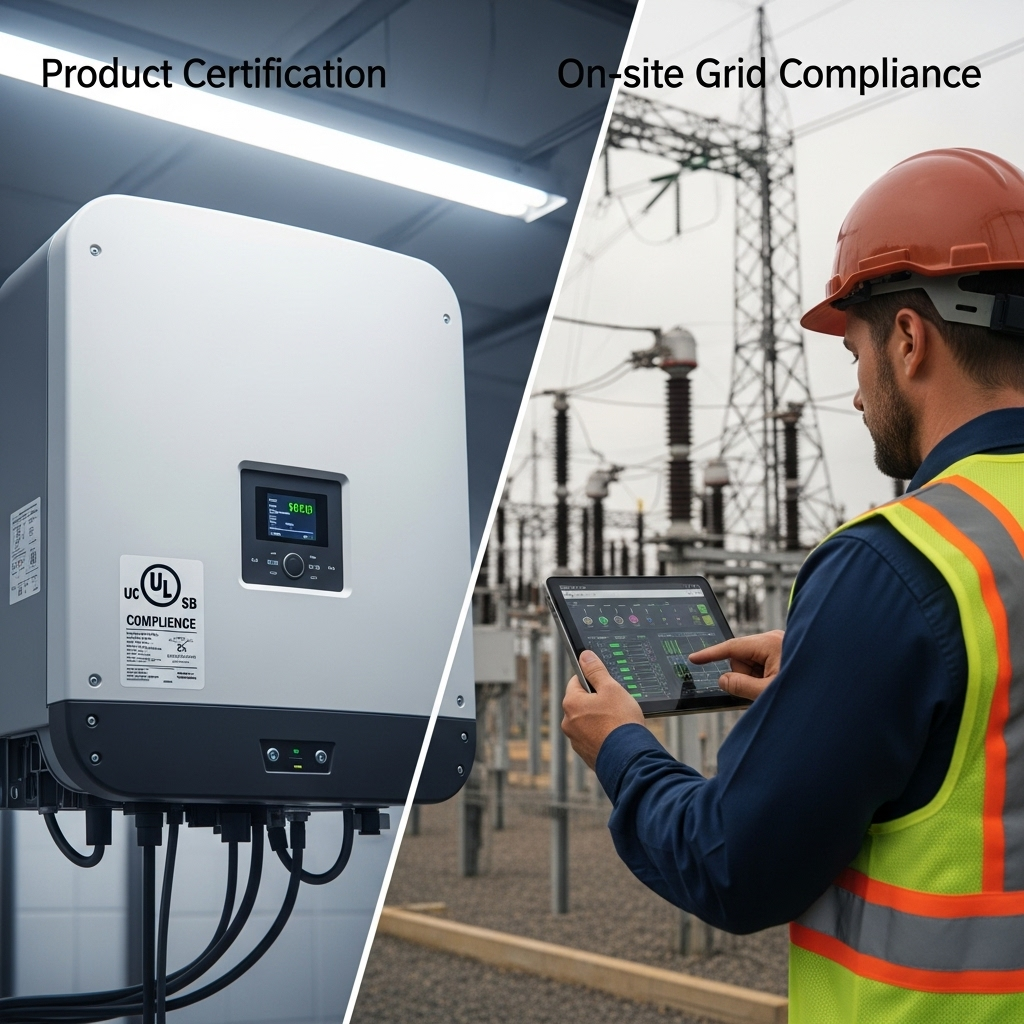In any solar energy system, the inverter is a critical component, converting the DC power from your panels into AC power for your home. But beyond this basic function, inverters play a vital role in maintaining the safety and stability of the entire electrical grid. This is where a set of crucial standards comes into play: UL 1741, IEEE 1547, and IEC 62109. Think of them as the official rulebook that ensures every inverter is a safe and responsible grid citizen.
Understanding these certifications is important for anyone investing in solar and storage. They are the assurance that your equipment is not only safe for your home but also capable of interacting intelligently with the grid. This guide will demystify these complex numbers and letters, explaining what they mean for the reliability and performance of your energy system.
The Foundation of Safety: UL 1741 and IEC 62109
Before an inverter can even think about connecting to the grid, it must prove that it's fundamentally safe. UL 1741 and IEC 62109 are the primary standards that address the physical safety and construction of the inverter itself. They ensure the device is built to prevent electrical shocks, fire hazards, and other potential dangers.
UL 1741: The North American Safety Benchmark
UL 1741 is the core safety standard for inverters, converters, and controllers in the United States and Canada. Developed by Underwriters Laboratories, it sets rigorous requirements for the product's construction, materials, and performance under various stress conditions. This certification is a fundamental prerequisite for any inverter-based equipment intended for grid connection in North America. For our integrated Energy Storage Systems (ESS), ensuring the hybrid inverter meets UL 1741 is a non-negotiable first step for safety and compliance.
A key update to this standard is the UL 1741 Supplement B (SB). This addition specifically tests and certifies the "smart" grid-support functions that are defined by IEEE 1547. You can learn more about how these standards work together in the Grid Compliance Roadmap: UL 1741 SB and IEEE 1547.
IEC 62109: The Global Perspective on Inverter Safety
The International Electrotechnical Commission (IEC) developed IEC 62109 as a global safety standard for power converters used in photovoltaic systems. It is structured in two parts:
- IEC 62109-1: Covers general safety requirements, addressing hazards like electric shock, fire, and mechanical stress.
- IEC 62109-2: Provides particular requirements for inverters, detailing specific safety functions and fault condition responses.
While its scope is similar to UL 1741, IEC 62109 is designed for international application, making it essential for products sold in global markets. For a detailed breakdown, see our Compliance Checklist: IEC 62109 Safety for PV Inverters.
The Language of the Grid: IEEE 1547's Role in Interconnection
If UL 1741 and IEC 62109 are about product safety, IEEE 1547 is about grid performance. This standard dictates how Distributed Energy Resources (DERs), like your solar and storage system, must behave when connected to the grid. It ensures that your system acts as a supportive element, helping to maintain stability rather than causing disruptions.
From Simple Shutdown to Smart Grid Support
Early versions of IEEE 1547 required inverters to simply disconnect from the grid during any disturbance. However, as renewable energy adoption grew, this approach became counterproductive. The modern standard, IEEE 1547-2018, completely changed the philosophy. Now, inverters are required to be "smart" — to actively support the grid by riding through minor fluctuations and adjusting their output to help stabilize voltage and frequency. This evolution is critical for building a more resilient grid, a topic explored in Trend Watch: Grid-Forming Inverters and IEEE 1547 Updates.
Core Functions Mandated by IEEE 1547-2018
The 2018 revision of the standard mandates several advanced grid support functions:
- Voltage and Frequency Ride-Through: The ability to stay connected and operate through minor, temporary grid voltage or frequency deviations.
- Voltage Regulation: Actively managing reactive power to help stabilize local grid voltage.
- Frequency Response: Adjusting power output in response to changes in grid frequency to help maintain balance.
- Interoperability: The capability to communicate with the utility, allowing for remote monitoring and control if needed.
These functions are no longer optional; they are essential for the health of the modern grid. The real-world impact of this standard was demonstrated in the Case Study: IEEE 1547 Testing Unblocked Hawaii PV Interties.
Why This Matters for Your Energy System's Performance
An inverter compliant with IEEE 1547-2018 doesn't just benefit the utility; it benefits you. A stable grid means more reliable power and allows for higher penetration of renewable energy. Our hybrid inverters are designed with these grid support functions in mind, enabling our ESS to not just store energy, but to be a productive member of the grid ecosystem. The performance of these functions directly impacts your system's efficiency. For instance, the round-trip efficiency of a storage system, which we detail in our Ultimate Reference for Solar Storage Performance, is influenced by how well the inverter manages power conversion under dynamic grid conditions.
How the Standards Work Together: A Practical View
These three standards are not independent; they are interconnected parts of a comprehensive certification process. An inverter must meet safety requirements first, then prove its ability to perform as a good grid citizen.
The Certification Journey: From Design to Grid Connection
The path to a fully certified inverter involves a layered approach. Engineers first design the product to meet the fundamental safety requirements of UL 1741 or IEC 62109. Then, they implement the grid interaction software and controls to comply with IEEE 1547. Finally, a Nationally Recognized Testing Laboratory (NRTL) performs rigorous tests. The UL 1741 SB certification specifically confirms that an inverter has successfully passed the performance tests outlined in IEEE 1547.1 (the test standard for IEEE 1547). This journey is complex, as detailed in How to Certify Hybrid Inverters under UL 1741 SB, IEEE 1547.
Comparison Table: UL 1741 vs. IEEE 1547 vs. IEC 62109
To clarify the distinct roles of these standards, here is a simple comparison. For a more detailed analysis, you can read UL 1741 SB vs IEEE 1547 vs IEC 62109: What Each Covers.
| Standard | Primary Focus | Geographic Scope | Key Function |
|---|---|---|---|
| UL 1741 | Product Safety | North America | Ensures inverter construction is safe from fire and electrical hazards. |
| IEEE 1547 | Grid Interconnection Performance | North America (influential globally) | Defines how the inverter must behave when connected to the grid. |
| IEC 62109 | Product Safety | International | Provides a global benchmark for inverter safety design and construction. |
The Role of High-Performance Components
An inverter's ability to meet these standards relies heavily on the quality of its internal components and the energy source it draws from. The stability and high cycle life of our LiFePO4 batteries provide a consistent DC source, allowing the inverter to perform its grid functions reliably. As noted in our performance guide, factors like Depth of Discharge (DoD) and battery chemistry are crucial. A high-quality battery, like our LiFePO4 models which offer up to 95% DoD, ensures the inverter has the energy reserves needed to respond to grid signals as required by IEEE 1547.
Your Path to a Compliant and Reliable System
Understanding these standards moves you from being a simple energy consumer to an informed system owner. The combination of safety certification (UL 1741/IEC 62109) and performance compliance (IEEE 1547) is the formula for a dependable, grid-compliant energy system. Choosing components that are certified to these standards is a critical step in achieving energy independence with a system that is safe, effective, and built for the future.
Our commitment is to provide fully integrated solutions where every component, from the high-performance LiFePO4 batteries to the hybrid solar inverter, works in concert to meet these critical standards. This ensures you receive a reliable and scalable energy solution that stands the test of time.
Disclaimer: This information is for educational purposes only. It is not intended as legal or investment advice. Always consult with a qualified professional and your local utility to ensure compliance with all applicable regulations and requirements.





Leave a comment
All comments are moderated before being published.
This site is protected by hCaptcha and the hCaptcha Privacy Policy and Terms of Service apply.